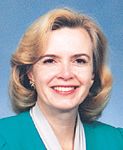- Acne
- Actinic Keratosis
- Aesthetics
- Alopecia
- Atopic Dermatitis
- Buy-and-Bill
- COVID-19
- Case-Based Roundtable
- Chronic Hand Eczema
- Chronic Spontaneous Urticaria
- Drug Watch
- Eczema
- General Dermatology
- Hidradenitis Suppurativa
- Melasma
- NP and PA
- Pediatric Dermatology
- Pigmentary Disorders
- Practice Management
- Precision Medicine and Biologics
- Prurigo Nodularis
- Psoriasis
- Psoriatic Arthritis
- Rare Disease
- Rosacea
- Skin Cancer
- Vitiligo
- Wound Care
Article
Do doctors' years factor into effective communication in group practices?
The business climate of medicine has led more dermatologists to join group practices. That means doctors of widely varying ages often work side-by-side. What impact does that have on the practice of medicine?

Key Points

The business climate of medicine has led more dermatologists to join group practices to deal with the realities of growing costs and allow them more leverage in dealing with insurance systems. That means doctors of widely varying ages often work side-by-side. What impact does that have on the practice of medicine?

Steven A. Kolenik III, M.D., of Norwalk, Conn., says doctors in his office range from their late 30s to early 70s.
"It's amazing. It gives our practice way more depth and breadth in terms of appeal to the patients," Dr. Kolenik says. "We like to say we have something for everyone: all ages, male and female, intense and laid-back. But we all like each other."
An assistant clinical professor at Yale University and managing partner of the Connecticut Dermatology Group, Dr. Kolenik contends that no matter what the age, all practitioners learn from each other.
"The older people have something to teach the younger ones from all their clinical experience, and the younger ones bring in fresher ideas and newer techniques," Dr. Kolenik says.
Best of both worlds
In Verona, N.J., Steven Spates, M.D., who belongs to a group of a dozen dermatologists ranging from those who recently completed residency to 30-plus-year veterans, expands on that thought.
"You get the best of both worlds," Dr. Spates says. "Our older doctors have decades and decades of experience. They've seen most things and, certainly, are not surprised by a lot, while someone just out of training is still clear in their mind about the fundamentals and the genetics and pathophysiological principles of these diseases."
Mary M. Dobson, M.D., has worked in a couple of practices but calls her current group of eight doctors who span 30 years in age "nirvana."
She credits her experienced senior partners as setting a tone she didn't experience practicing with younger dermatologists.
"Dr. (Tom) Meek and Dr. (G. William) Poche are just such gentleman. Dr. Meek says, 'I'm going to treat you with respect, because that's the way I was treated, and I hope when I'm gone, you'll treat the next person the same way.' The kindness and diplomacy flow to every member of the practice. They want employees to be incentivized, not reprimanded," Dr. Dobson says.
David Colbert, M.D., director and founder of the New York Dermatology Group, says the doctors in his practice represent a couple of generations, and he likes it that way.
"I'm at the older end of our age spectrum, and it's nice to bring in younger people, because they bring in new energy, new ideas and new academic approaches they've learned because of changes in residency programs," he says. "It's also nice because after you've been out of school for a while, some of the unusual details in dermatology you may have learned for the boards don't stick with you as long as you would like. It's refreshing to have younger people remember all that and have it more at their fingertips."
But Dr. Colbert thinks the older - read: more experienced - doctor definitely brings something to the table.
"The older physician is more experienced and tends to be able to work faster and more efficiently. One isn't better than the other, they're just different, and a lot of sharing goes on," he says. "It's nice coming into a group as a doctor just out of residency, where there was always a professor to answer your question or confirm a diagnosis.
"With the older generation in the practice, the younger docs still have someone they can talk to. If there's a good energy exchange between the two generations, it works nicely, and as those people mature, they become the new mentors. It's a back-and-forth thing that's very positive. There's nothing negative about it," Dr. Colbert adds.
Lessons in history
Braden Rance, M.D., became the newest doctor to join a 39-year-old practice in Overland Park, Kan., two years ago. The small group represents a couple of generations, but Dr. Rance says he's even learning from generations who came before.
"For me, that was really educational," Dr. Rance says. "In residency you get a somewhat limited perspective from the staff you have. You may hear about different things done on the outside, but you don't experience it. Then you get into a group practice and see some of the things you've heard described.
"I took over a lot of the patients from the founder of the group, who retired, and I would look at the old records when patients came in, and see what he prescribed over the years, and how he treated different conditions. I found ideas I had never thought of, and that I certainly hadn't learned in training. So, I tried them, and found they worked pretty well," Dr. Rance says.
Of course, none of this means that challenges never present themselves. This rings true even in the most smoothly run practices. According to the dermatologists who spoke to On Call, the key is how those challenges are handled.
Communication challenges
One of the biggest challenges in Dr. Spates' practice is the different methods of communication common to each generation.
"Some of our doctors aren't quite as comfortable with all of the facets of new technology," he says. "And where some might be comfortable jotting a note on a sticky pad, other physicians are more likely to shoot an e-mail or text message. They might even use Facebook.
"What we've done is pair up staff members with doctors who might not be as comfortable with the new technology, to help them by checking out those sources of information and responding in an appropriate way," Dr. Spate says. "At the same time, our younger group utilizes our older doctors as a resource and asks their opinions on clinical issues, because they've really seen a lot."
In Baton Rouge, La., Dr. Dobson, a clinical assistant professor at Louisiana State University, says one method her office uses to keep communications open between generations is a monthly staff meeting.
"It keeps us so well-organized. If anybody has any issues, they put them on the agenda. We talk about everything," Dr. Dobson says. "It is so worth not seeing patients for that three hours a month, because no one wants to go home and be mad about anything. We also have an office manager who always seems to have what anyone needs at her fingertips. She really makes life easier for us."
Shared philosophies
Dr. Rance considers it important to share the same philosophy of care.
"We're fairly conservative. We like to see our own patients. We don't have any PAs or nurse practitioners. We're very hands-on and don't like to delegate the management of our patients to someone else," he explains. "It would be difficult if we weren't all like that.
"Give-and-take is crucial, or someone will be unhappy because they think someone else wants to curtail the way they practice," Dr. Rance says.
According to Dr. Kolenik, "Sometimes the older guys have to be pushed a little bit to change, and the younger people - thinking back to myself - come out of residency thinking we know everything, until we rapidly realize we really don't know very much.
"The answer is to put yourself in the other person's shoes," he says. "The older guy has to remember what it's like to come out and be new and has to mentor the younger doctors and stay relevant by learning new things. My older partner loves to say - and it's a motto of our practice - 'When you're done changing, you're done!'"
Karen Nash, a print and broadcast media medical reporter and former TV medical news reporter, has been writing On Call for more than 20 years. Contact her at welshman@sio.midco.net
.
Newsletter
Like what you’re reading? Subscribe to Dermatology Times for weekly updates on therapies, innovations, and real-world practice tips.
















